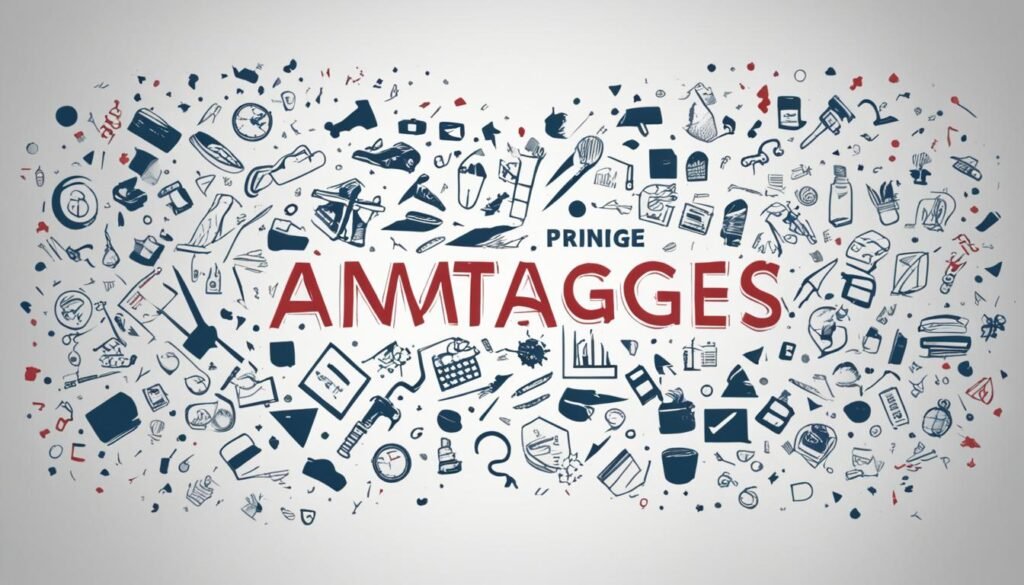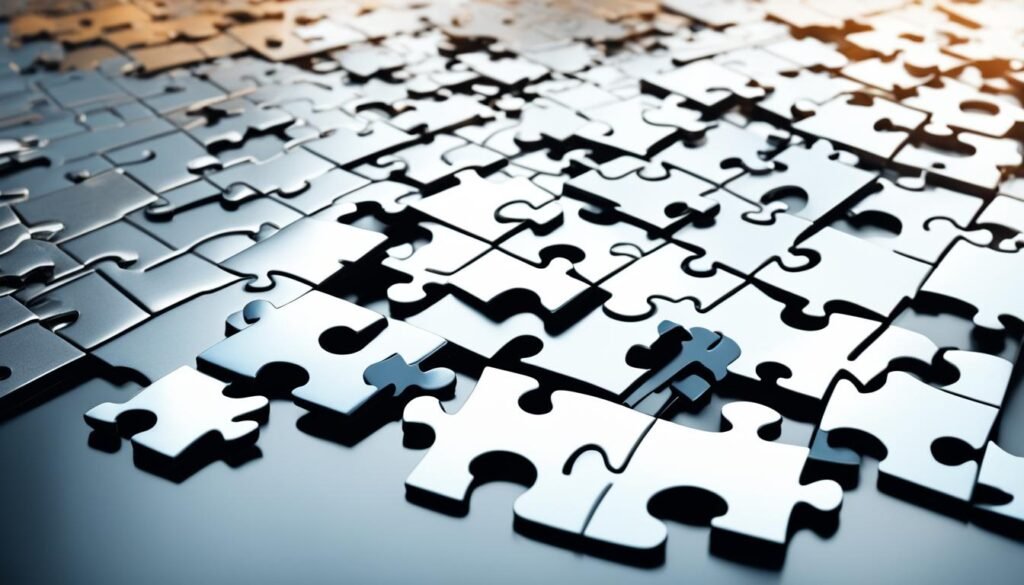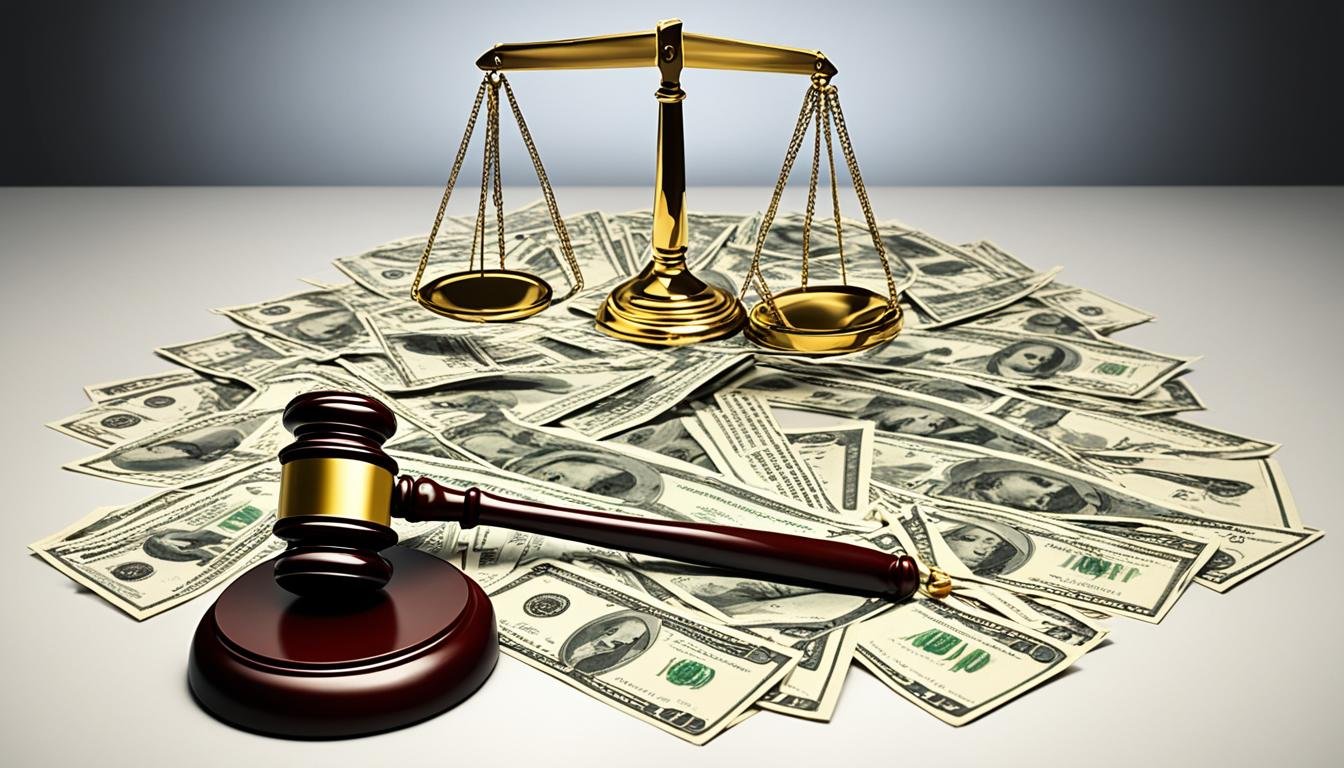Every year, thousands of people get hurt in the U.S. This happens because of mistakes or on purpose. Things like car crashes, slip and falls, or bad medical care can change lives.
It’s very important to know about the different kinds of damages in personal injury law. There are compensatory damages that cover medical bills and lost wages. And there are punitive damages. They are there to punish the one who was very careless.
This visual guide is here to help you understand how damages work in personal injury cases. It gives you a clear look at the types of damages. It also shows how to deal with the legal system. Let’s learn more about the world of damages in personal injury law.
Key Takeaways:
- Personal injury cases involve thousands of injuries each year in the United States.
- Understanding the different types of damages is crucial for seeking financial compensation.
- Compensatory damages cover medical expenses, lost income, and pain and suffering.
- Punitive damages aim to punish the responsible party for their gross negligence.
- A visual guide can help you navigate the complexities of damages in personal injury law.
Understanding the “Made Whole” Doctrine in Personal Injury Law
In personal injury law, there’s an essential concept called the “made whole” doctrine. It aims to fully compensate victims for their losses. This includes property damage, physical injuries, or emotional trauma. The goal is to provide enough monetary compensation to cover these damages.
The “made whole” doctrine says victims should return to their pre-accident state. Compensation should include both tangible and intangible damages. These range from medical bills to emotional distress and pain.
This doctrine understands the broad impact of personal injuries on a person’s life. It sees beyond physical injuries to emotional and financial stress. The goal is to address both tangible and intangible harms comprehensively.
Victims can get financial help for various losses under this doctrine. This includes property damage, physical injuries, and emotional trauma. Such compensation aids in rebuilding their lives post-trauma.
| Tangible Damages | Intangible Damages |
|---|---|
| Medical expenses | Emotional distress |
| Property damage | Pain and suffering |
| Lost income | Loss of enjoyment of life |
By covering both tangible and intangible damages, the “made whole” doctrine fully compensates victims. This doctrine is key in personal injury law. It allows victims to seek justice and feel safe again.
Differentiating Between Tangible and Intangible Damages
In personal injury cases, we split damages into tangible and intangible groups. Knowing the difference is key for figuring out possible compensation in a lawsuit.
Tangible Damages
Tangible damages are the clear financial losses from an accident or injury. They can include costs like:
- Medical bills: Costs for medical care, including hospital stays, surgeries, and physical therapy.
- Repairs: Money spent fixing or replacing things like your car or belongings.
- Lost wages: Money you didn’t earn because you were recovering and couldn’t work.
Figuring out these damages is usually straightforward. You can use bills, receipts, and other records to show your losses.
Intangible Damages
Intangible damages are about non-financial losses from an injury or accident. They include:
- Physical pain and suffering: Any ongoing pain or discomfort from your injury.
- Emotional pain and suffering: Mental distress, like anxiety or depression, from the accident.
- Loss of consortium: Loss of support or companionship, often felt by family.
Intangible damages are more subjective. They often need experts to figure out fair compensation.
Personal injury law values both tangible and intangible damages. Victims can seek money for all their losses, no matter how the injury happened.

For personal injury lawyers and their clients, grasping these damage types is key. They need to accurately show these impacts. This helps victims get what’s needed to cover all losses.
The Types of Damages Covered by Personal Injury Law
Personal injury law covers many acts, both intentional and unintentional. Intentional acts include violence like assault. Unintentional acts come from negligence, when someone’s carelessness causes harm.
If you’re harmed by either kind of act, personal injury law helps you sue. You can seek money for different damages. These include things like:
- Medical bills and expenses related to your injuries
- Lost wages and income due to your inability to work
- Pain and suffering endured as a result of the incident
- Emotional distress caused by the traumatic experience
It also covers premises liability. If you get hurt on someone’s property because they were careless, you can ask for money. This covers your injuries and other costs.
It’s key to know that personal injury law is there to help victims. Knowing what damages you can get help for is important. By seeking a lawyer, you can start the legal process and aim for the compensation you need.

Example Case: Premises Liability
“While at a friend’s house, I slipped on a wet floor without a sign. I got hurt badly, including a broken wrist and concussion. Thanks to personal injury law, I sued for premises liability. My friend didn’t keep their place safe. I won money for my medical costs, lost wages, and my pain, with a lawyer’s help.”
The Frequency of Injuries Due to Intentional or Negligent Acts
Every year, thousands in the U.S. get hurt because of others’ harmful actions. Victims and their families feel these effects deeply.
Intentional injuries include things like assault, domestic violence, and violence at work. These involve someone wanting to hurt another person on purpose.
Negligent injuries happen when someone doesn’t take enough care. Examples are medical mistakes, car accidents, and unsafe places.
Personal injury law helps victims get money for their injuries. It addresses the harm done, whether it’s intentional or due to neglect.
Falls are a top reason people get hurt unintentionally. They lead to many emergency room visits. Medical mistakes can change lives forever. Boating for fun can turn dangerous. Jobs in many fields have risks. Car and truck crashes often cause both physical pain and emotional stress.
A personal injury lawyer can help you get money for your injuries. They know how to handle cases of harm done on purpose or by accident.
The goal of filing a lawsuit is to help victims get back to their normal lives. This might include money for medical bills, missed work, or emotional pain.
If someone else’s harmful actions injured you, talking to a lawyer is key. They can guide you, get evidence, and work to get you the most money possible.
The image shows how harmful actions hurt people and society. Legal help can ease the burden, offering a way towards healing and justice.
The Role of Personal Injury Attorneys in Obtaining Compensation
Have you been hurt because someone was careless or did something on purpose? It can feel pretty daunting to deal with the legal stuff by yourself. This is when personal injury attorneys come in. They help you understand everything and fight for your rights. These pros are experts at looking out for folks who got injured and making sure they get paid what’s fair.
Personal injury attorneys are super important when you need cash for medical bills, lost wages, and other stuff because of an accident or something bad that happened. They really know their stuff about injury law and the best plans to make your case strong.
These attorneys find out who’s to blame for your injuries. They check every detail of what happened, collect proof, and point out who has to pay up. By figuring out who’s at fault, your attorney can go after them for the money you should get.
The Process of Seeking Financial Compensation
Personal injury attorneys know exactly how to ask for money for you. They get all the documents ready, like medical records, police reports, and statements from people who saw what happened. All this evidence makes your case better.
After they have everything they need, they talk to the insurance people. They try hard to get a deal that covers your bills, lost money, and other bad stuff that happened because of the incident.
If talking doesn’t work, they’re ready to fight for you in court. They know how to tell your story, question witnesses, and convince the judge and jury. With lots of experience in court, they’re good at making strong arguments.
Personal injury attorneys work hard for you, making sure you get the money you need. They deal with all the legal things, so you can focus on getting better while they stand up for you.
Why You Need Personal Injury Attorneys
It’s tough to ask for money after you get hurt. Without a personal injury attorney, dealing with the legal system and getting the most money can be hard. They know all the special rules and how to build a tough case against the insurance guys.
With a personal injury attorney, you’re more likely to be treated fairly. They get how the legal system works and know how to talk to insurance companies to get you the best result.
Personal injury attorneys speak up for you and get you the money you need to start over. They’re really committed and have what it takes to take on tough claims. If you’ve been hurt, talking to one of these attorneys can make a huge difference. They make sure people listen to you and that you’re treated right.
Types of Compensatory Damages a Personal Injury Attorney Can Help Recover
When you file a personal injury claim, knowing the types of compensatory damages is key. A skilled attorney in North Carolina will fight for the compensation you deserve.
Compensatory damages cover different parts of your injury, such as:
- Medical expenses: These cover your medical treatment costs like hospital stays, surgeries, medications, physical therapy, and continuous care. It’s vital to track and add up these costs for full compensation.
- Lost income: If you missed work or can’t earn as much because of your injury, you could get money for lost wages and future earnings.
- Pain and suffering: The law knows the physical and emotional pain from an accident. Your lawyer will calculate your pain and suffering for fair compensation.
- Emotional distress: Accidents can cause big emotional problems like anxiety, depression, and PTSD. You can get money for these emotional hurts to help you heal.
- Loss of enjoyment of life: If you can’t do activities or enjoy life as before, you may get money for this loss.
Big injuries may need long-term medical care, rehab, and even home health services. It’s crucial to have a lawyer who understands the full impact of your damages. They can figure out the right compensation for now and the future.
Image related to compensatory damages:
Getting a personal injury attorney on your side helps you through the complex legal system. They’ll fight for your rights, talk with insurance folks, and even go to court if needed. Their goal? To get you back to your life before the injury. They want to make sure you have the money you need for a full recovery.
Conclusion
Personal injury law helps those hurt by others, whether on purpose or by accident. It covers all kinds of harm, ensuring victims can get money for their injuries.
Victims can get help for medical bills, lost wages, and pain. They can also seek compensation for emotional distress and losing the joy of life.
Personal injury lawyers are key in this process. They guide, support, and stand up for victims. They make sure victims have someone on their side in court.

